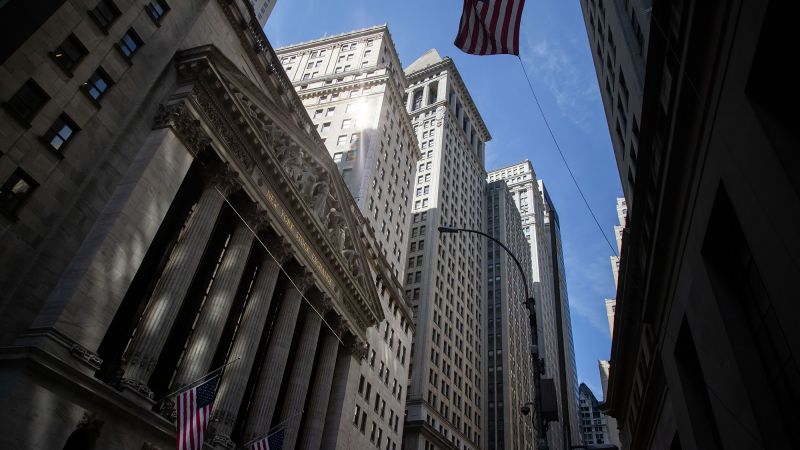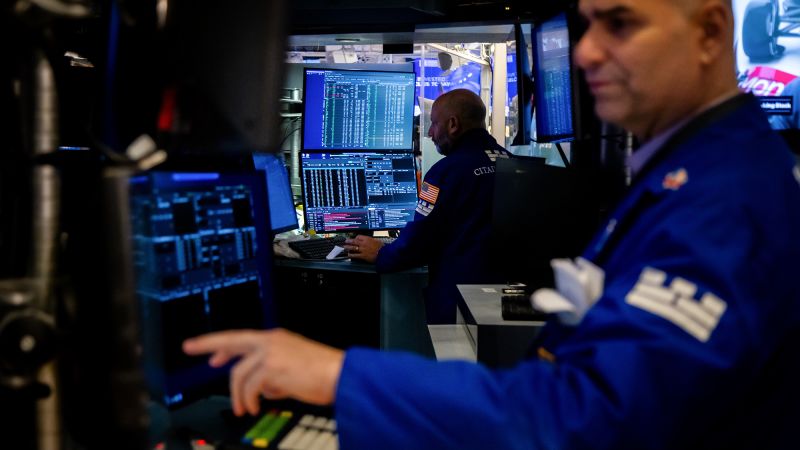On Friday, U.S. stock markets experienced a notable uptick, buoyed by China’s willingness to engage in trade discussions and a surprisingly positive jobs report. The Dow Jones Industrial Average surged by 570 points, reflecting a 1.4% increase, while the broader S&P 500 climbed 1.6% and the tech-centric Nasdaq Composite rose by 1.7%.
Historic Winning Streaks for the S&P 500
The S&P 500 is on the verge of achieving its first nine-day winning streak since November 2004, as reported by FactSet. This remarkable performance comes after a period where the index frequently saw shorter winning streaks, with a nine-day stretch proving elusive for nearly two decades.
- Current Performance:
- S&P 500: Up 1.6%
- Dow: Up 1.4% (still down 2% since April 2)
- Nasdaq: Up 1.7%
The recent rally positions the S&P 500 well to recover from losses stemming from President Donald Trump’s announcement of "reciprocal" tariffs on April 2.
Positive Job Market Data
The surge in stock prices was further fueled by the Labor Department’s announcement that the economy added 177,000 jobs in April, significantly exceeding the anticipated 135,000 jobs.
Chris Zaccarelli, Chief Investment Officer at Northlight Asset Management, expressed optimism: “The jobs data provided a welcome relief to markets, indicating that while recession fears linger, the buy-the-dip mentality can persist—at least until the tariff pause is lifted.”
China Signals Willingness for Talks
Adding to the positive momentum, a report from the Wall Street Journal indicated that China is contemplating ways to address U.S. concerns regarding its involvement in the international fentanyl trade. A spokesperson from China’s Commerce Ministry mentioned they are “currently evaluating” U.S. proposals for renewed trade negotiations, suggesting a more accommodating stance that could pave the way for dialogue.
- Key points to watch:
- Potential trade developments between the U.S. and China
- Market reactions to any delays in negotiations
Persistent Policy Uncertainty
Despite the upbeat jobs report, uncertainty still looms over the markets. David Russell, Global Head of Market Strategy, remarked, “The employment figures reveal that the U.S. economy remains strong amidst tariff uncertainties. This provides leaders with the opportunity to avert a recession if trade issues can be resolved swiftly.”
As Wall Street remains on edge, recent data from the Commerce Department indicated a contraction in economic growth, raising questions about the sustainability of the current market rally.
Federal Reserve Rate Considerations
Former President Trump took to social media, urging the Federal Reserve to lower interest rates, claiming, “NO INFLATION, THE FED SHOULD LOWER ITS RATE!!!” The strong job numbers have altered traders’ expectations, reducing the likelihood of a rate cut in June from 55% to 36.6%.
Gina Bolvin, President of Bolvin Wealth Management Group, noted that the report allows the Fed additional time to focus on its inflation goals, which remain above the 2% target.
Tech Sector Resilience
The tech sector also contributed to the rally, with impressive earnings from both Meta and Microsoft. Meta’s shares rose 4.6% on Friday, while Microsoft saw an increase of 2.5%. Analysts highlighted the strength of Big Tech amid ongoing concerns in the broader market.
Conversely, Apple faced challenges, reporting potential losses of $900 million due to tariffs, resulting in a 4% drop in its stock price on Friday.
Global Market Impact
The rally in the U.S. stock market was echoed globally, with Europe’s Stoxx 600 index climbing 1.67% and Japan’s Nikkei 225 increasing by 1.04%.
As we look ahead, if the S&P 500 closes higher again on Monday, it would mark the first 10-day winning streak since 1990, as noted by Howard Silverblatt from S&P Dow Jones Indices.
This developing story will continue to unfold as investors remain vigilant for new economic data and trade negotiations.
Stay tuned for more updates on these critical market movements.










